The pool of exceptional English talent looks bottomless right now across both the men’s and women’s games. It has been an incredible year for the nation, with the men having reached the UEFA Euro final in 2021 before the women went one step further to lift the trophy this summer for the first time ever.
New names are constantly popping up out of the blue in the lower divisions, especially in the Championship, and onto the radar of scouts from sides in the Premier League. Youngsters such as Levi Colwill, Djed Spence and Malcolm Ebiowei have excelled in the Championship before making the step up to clubs in the top tier. Now, there is a new name being cast into the limelight.
In April 2021, 16-year-old Alex Scott was handed his debut for Bristol City by Nigel Pearson in a home game against Luton Town. Within months, the teenager became a first-team regular for the Robins and in June 2022, won the U19 Euros with England.
As the motto goes, if you’re good enough, you’re old enough and Scott certainly is good. Now one of the first names on Pearson’s teamsheet, Scott is rapidly developing and has garnered interest from clubs such as Tottenham Hotspur and Manchester United.
This tactical analysis piece will be a scout report of the English midfielder. It will be an analysis of Scott’s playstyle as well as how he is used within Pearson’s tactics at Ashton Gate.
Player profile and versatility
Weighing 69kg, or 152lbs, Scott is a very nimble player with a somewhat low centre of gravity despite being 5ft 10/178cm. Nevertheless, at 18, there may still be a slight bit of room for him to grow even further in terms of his height and peak muscle mass, although the key words there are ‘may’ and ‘slight’.
One of the key reasons behind his exponential rise at Bristol, alongside his obvious quality, is his versatility. During his near-18-month spell in the first team, Scott has been used in a variety of positions, making him a very reliable squad player.
Pearson has predominantly used a 3-4-1-2 formation over the past calendar year, deploying the shape in 41% of the Robins’ games in all competitions.
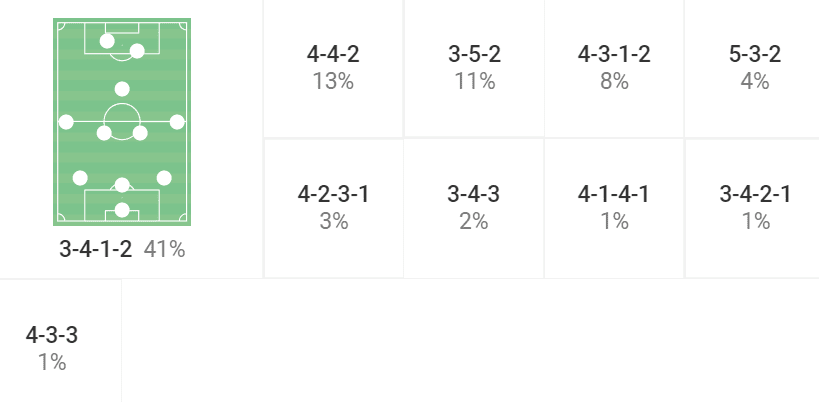
Within this formation, Scott excels in several different positions. Last season, Pearson primarily used the 18-year-old as a right wing-back.
This can be quite common with young players. Often, they are shoehorned into wider positions instead of being cast into the deep end in the core of the team. His deployment on the right can be seen from the player’s heat map from the previous campaign.
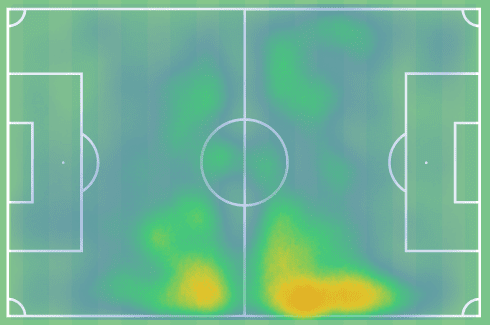
However, we can also see that Scott was used sparingly in midfield, sometimes as a double-pivot and as a number ‘10’.
This season, Scott has had the manager’s full trust in the middle of the park, being employed as Bristol’s attacking midfielder, one of the most vital positions in the team, at just 18.

As we can see from this season’s heatmap, although it’s a small sample size, Scott is picking up the ball all over the pitch, especially in the central corridors and is now a vital cog in Bristol’s wheel on and off the ball.
While he has been used in several different positions, when analysing his games for this scout report, Scott’s best role seems to be as a ‘10’, given freedom to roam around the pitch and pop up in different pockets of space. This will be analysed in further detail later.
Tactical responsibility off the ball
Let’s start off by looking at a side of the game not usually associated with attacking midfielders. As already mentioned, managers tend to place young players in positions where they will have fewer tactical responsibilities on the pitch.
But credit to Pearson, and the player himself, Scott is able to play in such an important position within the team’s structure due to his tactical awareness, particularly off the ball in the defensive phases.
Bristol press high up the pitch as Pearson looks to adopt somewhat of a man-oriented pressing scheme, particularly against a side using one pivot midfielder. Quite often, Scott is instructed to keep tight to the single pivot to block or intrude on the passing lane into the player.
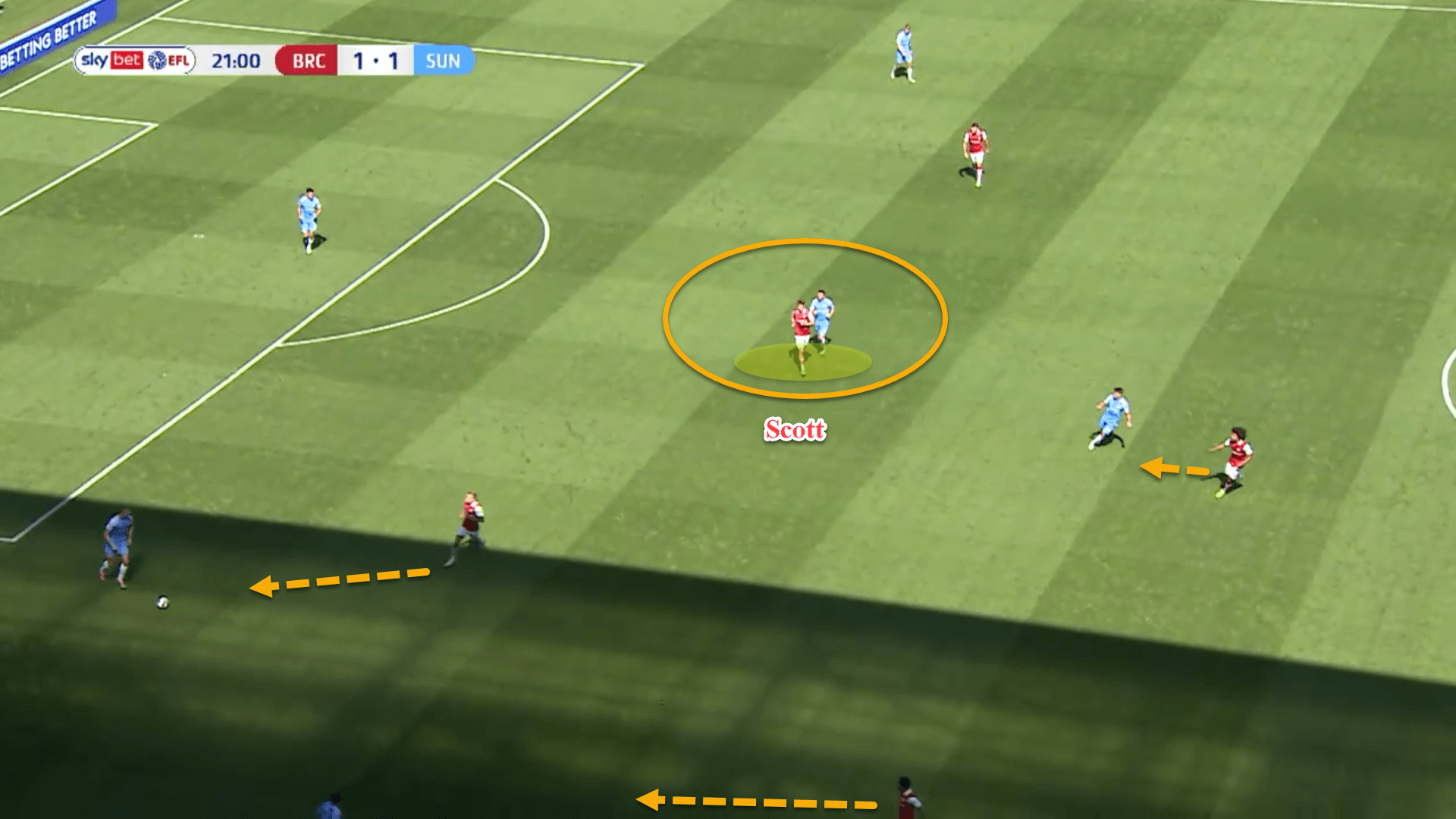
Here, Bristol were pressing in a high block against Sunderland’s 3-1-4-2 shape. The two centre-forwards were tasked with pressing the back three and goalkeeper while Scott man-marked the Black Cats’ single pivot, preventing the ball from reaching him.
Scott is excellent at sticking with his man during this phase. Even if the player manages to drop and get away from his watchful eye, Scott will always break his back trying to jump them from behind before they can turn on the ball and face forward.
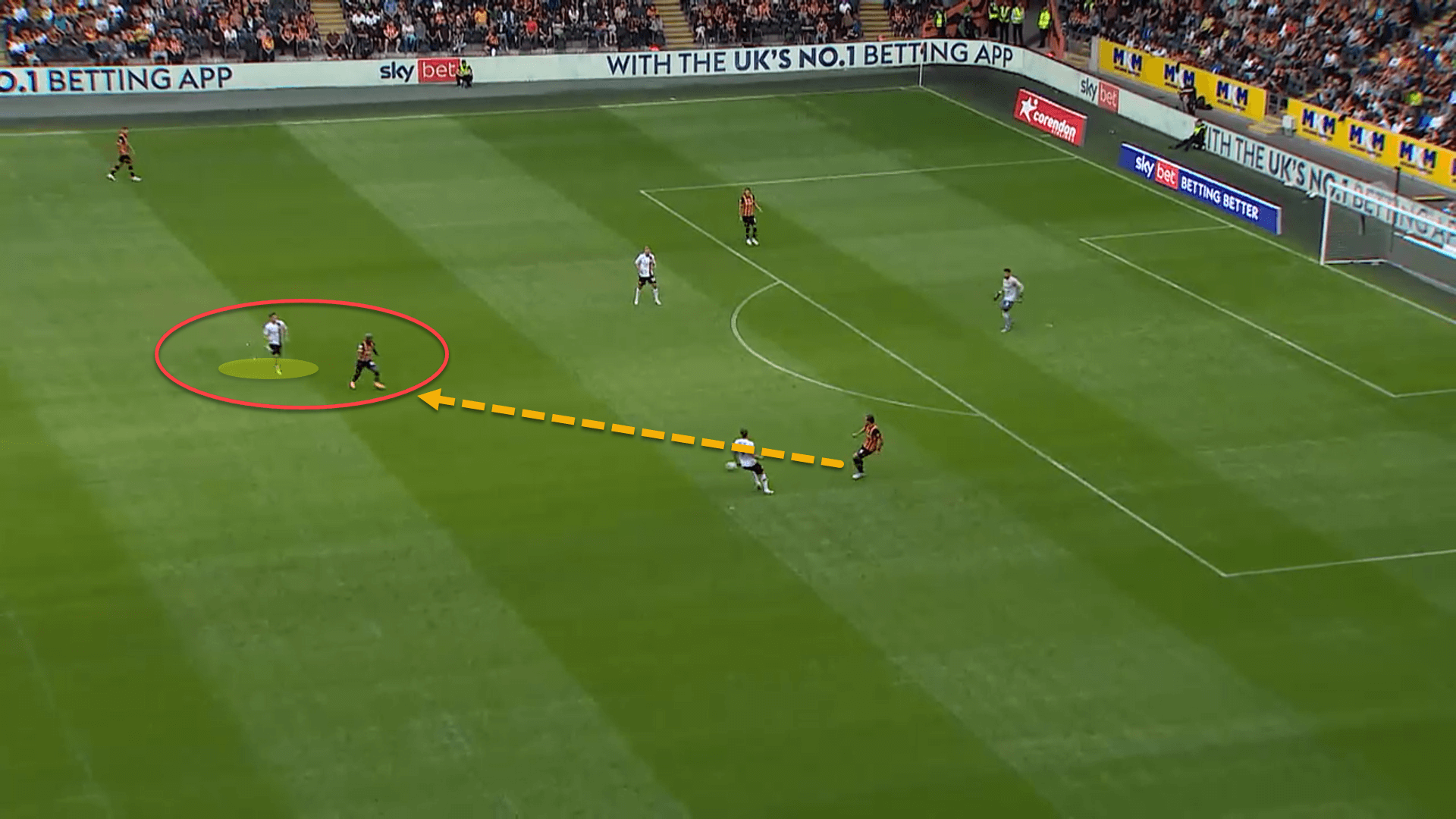
Not only this, but Scott also knows when he needs to stop man-marking a player and use his head to look at other forms of defending.
The next two images will display two different methods where the 18-year-old has shown a wonderful understanding of how a number ‘10’ needs to operate off the ball, proving Pearson right with his decision to trust him at the vertex of the midfield trio.
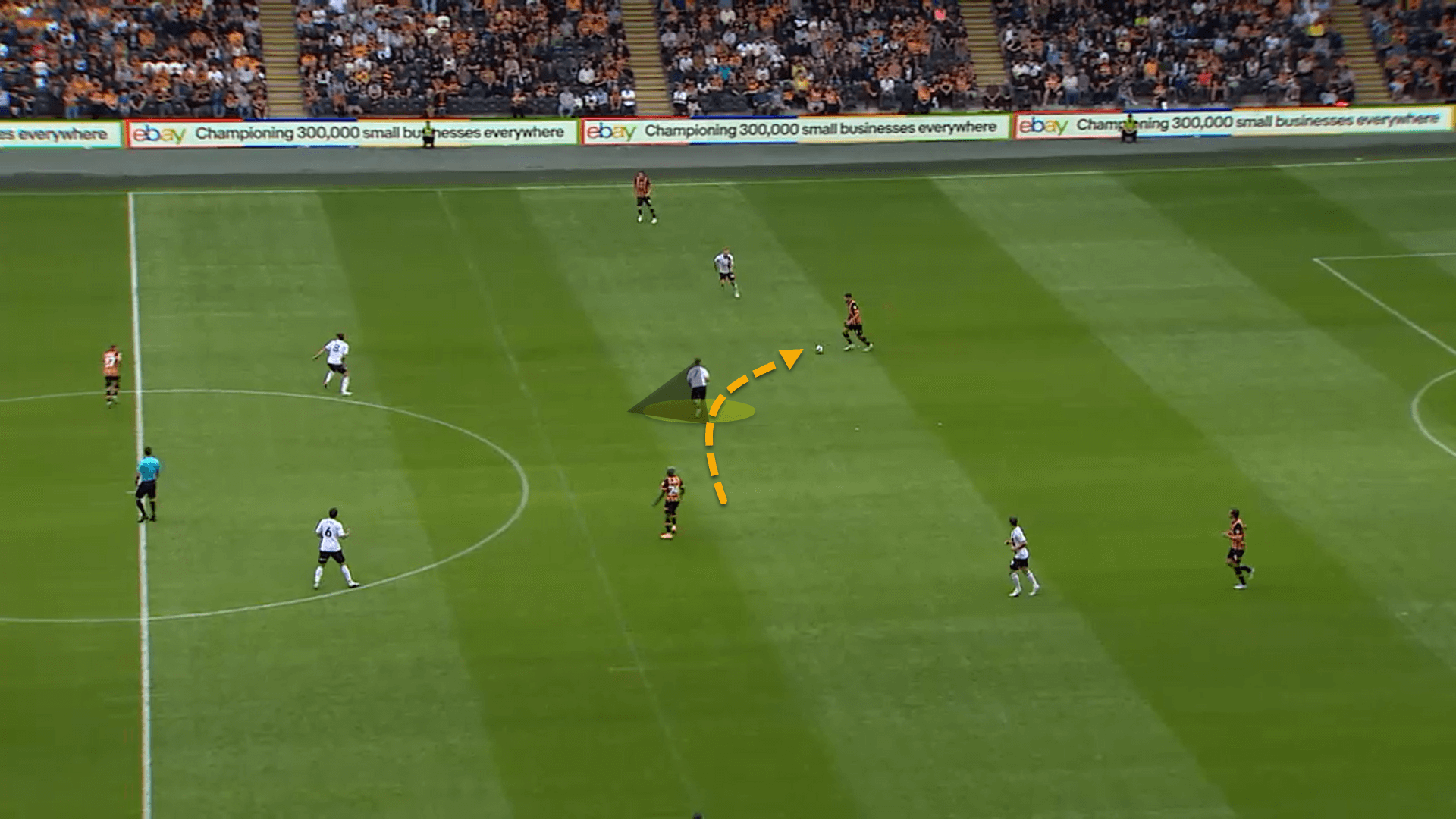
Firstly, in this example, Scott was sitting on Hull City’s deepest midfielder as Bristol looked to consolidate into more of a medium-level defensive block in their 3-4-1-2 shape, which became a 5-2-1-2 as the wingbacks dropped next to the centre-backs.
Hull’s centre-back had far too much time and space on the ball and so, leaving his man, Scott began pressing the ball-carrier but applied a cover shadow into the midfielder at the same time, killing two birds with one stone. He did this by curving his pressure to cut off the passing lane, forcing the centre-back to rush his pass.
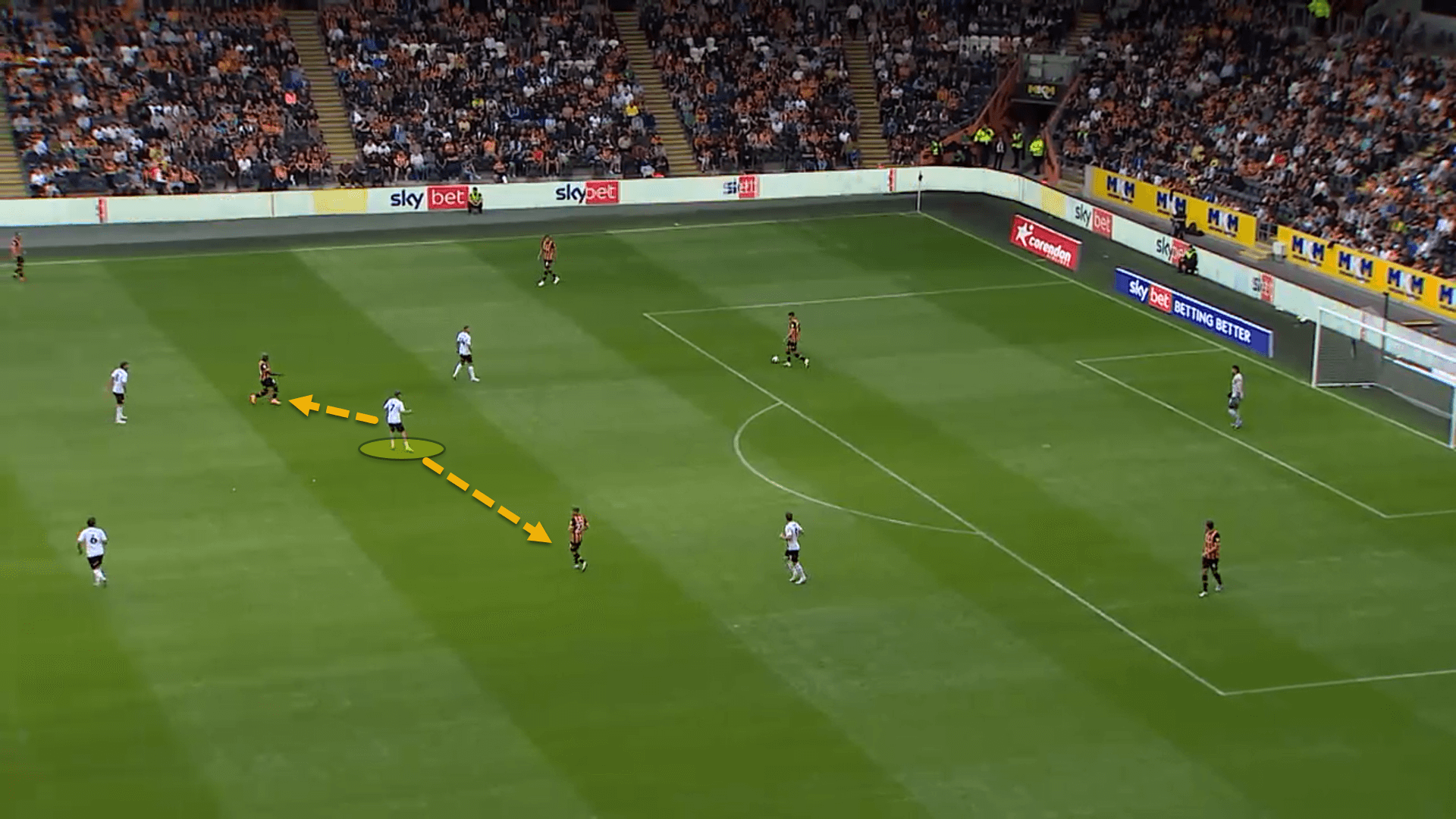
Secondly, in this example, Hull have kept their two central midfielders deeper during the build-up phase as they were struggling to progress through Bristol’s high block with just one pivot player.
Scott, noticing the tweak in their structure, stays between both of them, playing more of a zonal role as opposed to man-oriented. Whichever side the ball is played to, Scott is at a nice distance from both players to move across to either.
In the image, we can see his body is already skewing off to the left as the player on the ball looks prepared to pass the ball down this side.
Overall this season, Scott is averaging 5.25 ball recoveries per 90 with 46.7% of them coming in the opposition’s half of the pitch. He also challenges in 5.95 defensive duels per 90 winning a high rate of 76.5%, showing his tenacity and astuteness in the defensive phases despite being merely 18.
Adaptability in his roles
With the risk of sounding like a broken record, Scott’s versatility allows him to be used in several different positions.
One of his greatest strengths is his ability to understand exactly what is required from him in each different role within the team’s structure. If Scott plays as a ‘10’, he drifts into pockets of space all over the pitch. If used in a deeper role, he sits behind the play, looking to play line-breaking passes.
This season, as already mentioned, Scott has primarily been deployed as the attacking midfielder in Bristol’s 3-4-1-2. As we have analysed his role off the ball, let’s take a look at how he fares in the attacking phases.
Despite being a number ‘10’, Scott roams around the pitch, which he has been given license to do under Pearson, often dropping to the flanks to help create wide overloads.
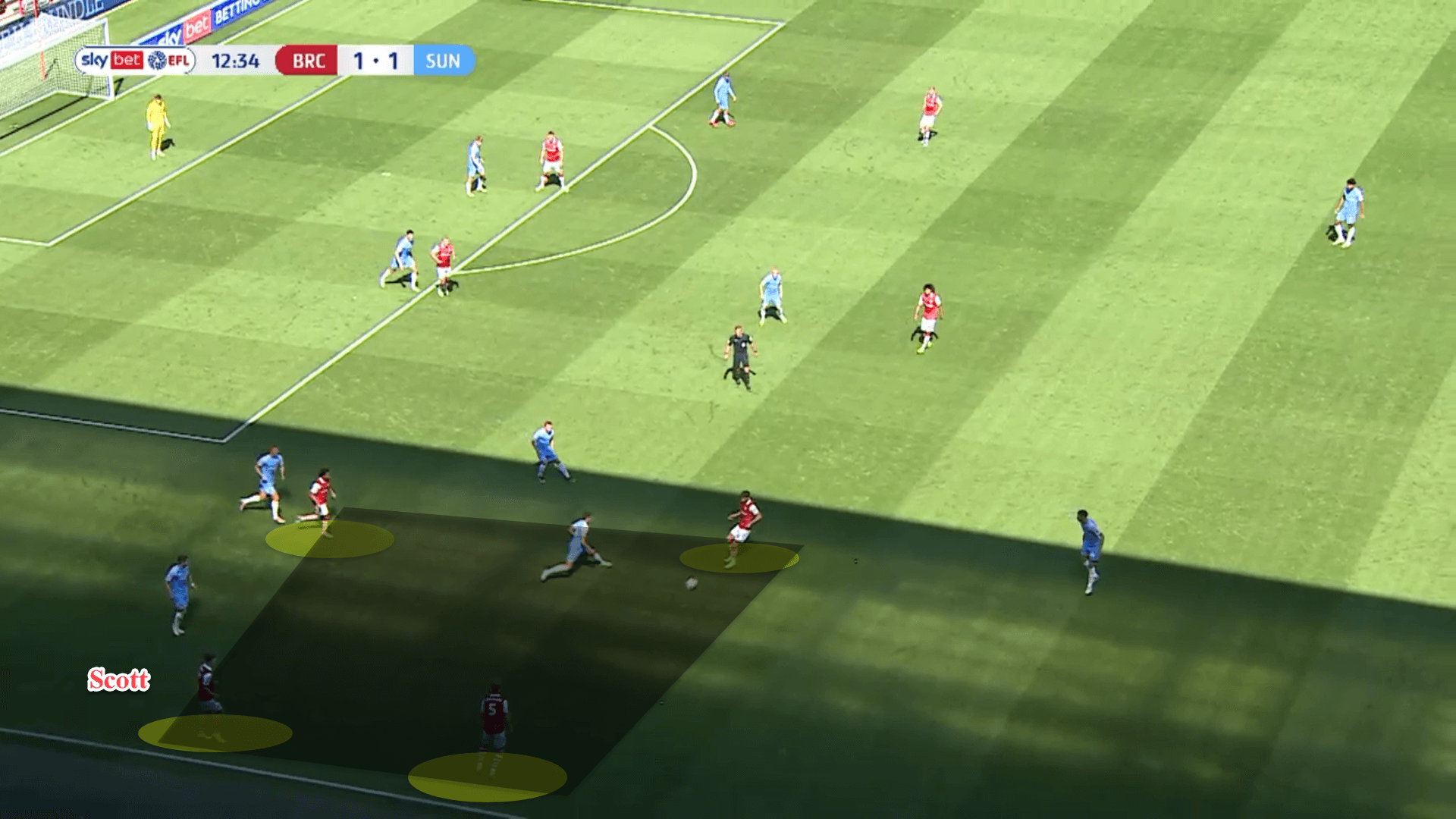
He is excellent at getting involved in combination play, especially in the final third which allows his side to break through the opponent’s defensive block and potentially put a cross into the penalty area.
One of the reasons for this is because Scott has a tendency to play a lot of one-touch passes upon reception of the ball, often laying it off to supporting players which quickens up the play.
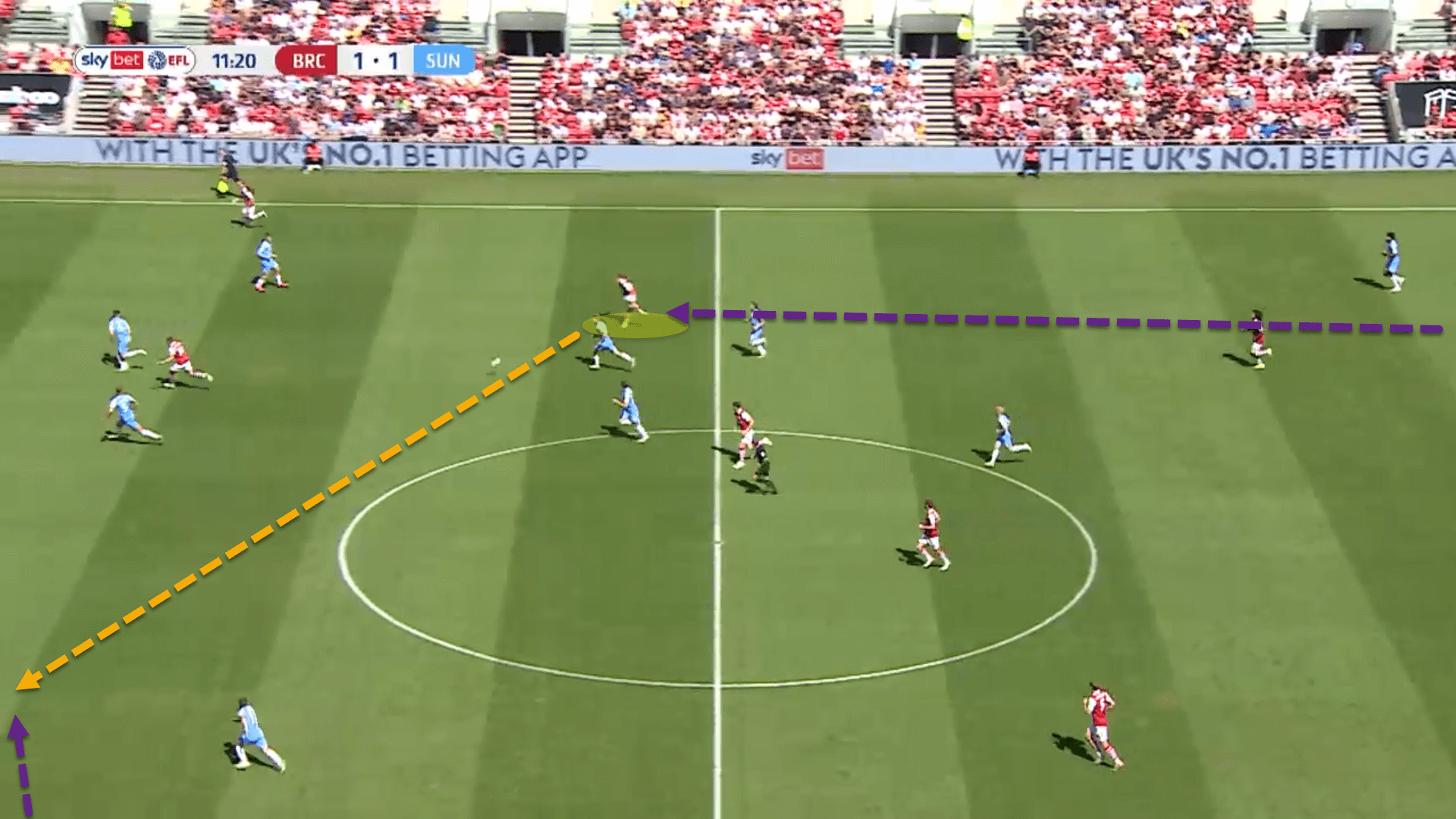
Here, Bristol’s centre-back managed to reach Scott with a wonderful line-breaking pass from the first third to the halfway line. Quickly reshaping his body, the 18-year-old plays a first-time ball to the far side, putting the Robins’ centre-forward through on goal.
Scott noticed the gap in Sunderland’s defence, looked for the ball from the defence and then used his quality to ensure that Bristol City were in on goal with just two passes.
As an attacking midfielder, Scott can hurry play quite a bit. This isn’t the worst trait in the world and has been successful for players like Bruno Fernandes at Manchester United. Nevertheless, when employed in a deeper role as part of a double-pivot, Scott is able to switch off this rushed thinking and be more secure on the ball.
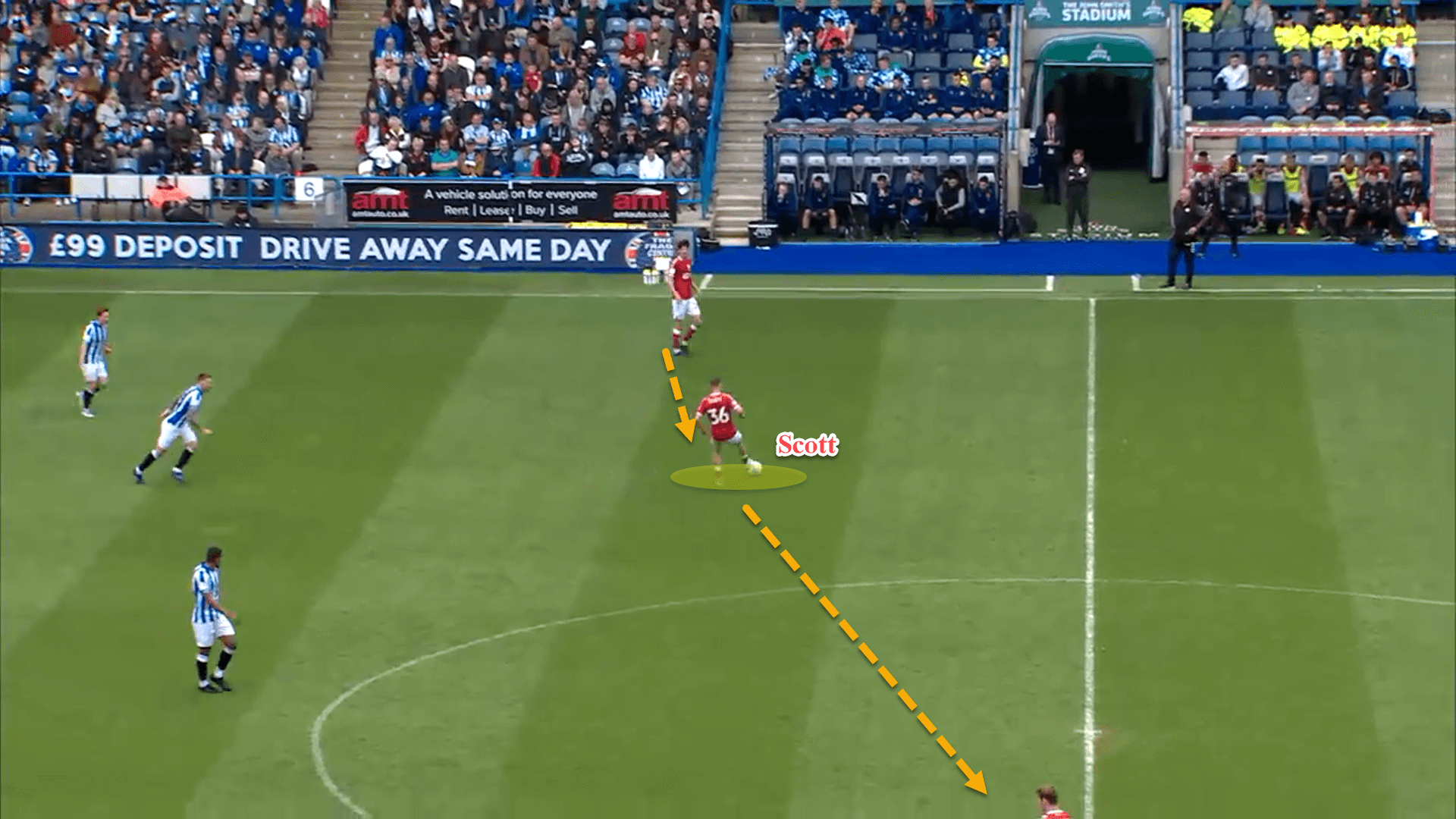
As shown in this image, in a pivot role, Scott sits behind the play, acting as an option for players to circulate the ball from side to side, whereas in a more attacking role, he is constantly taking players on and looking to break the lines.
That’s not to say Scott doesn’t look to progress the ball forward for his team in a deeper position. However, he does so only when the chance arises and doesn’t look to force the ball forward.
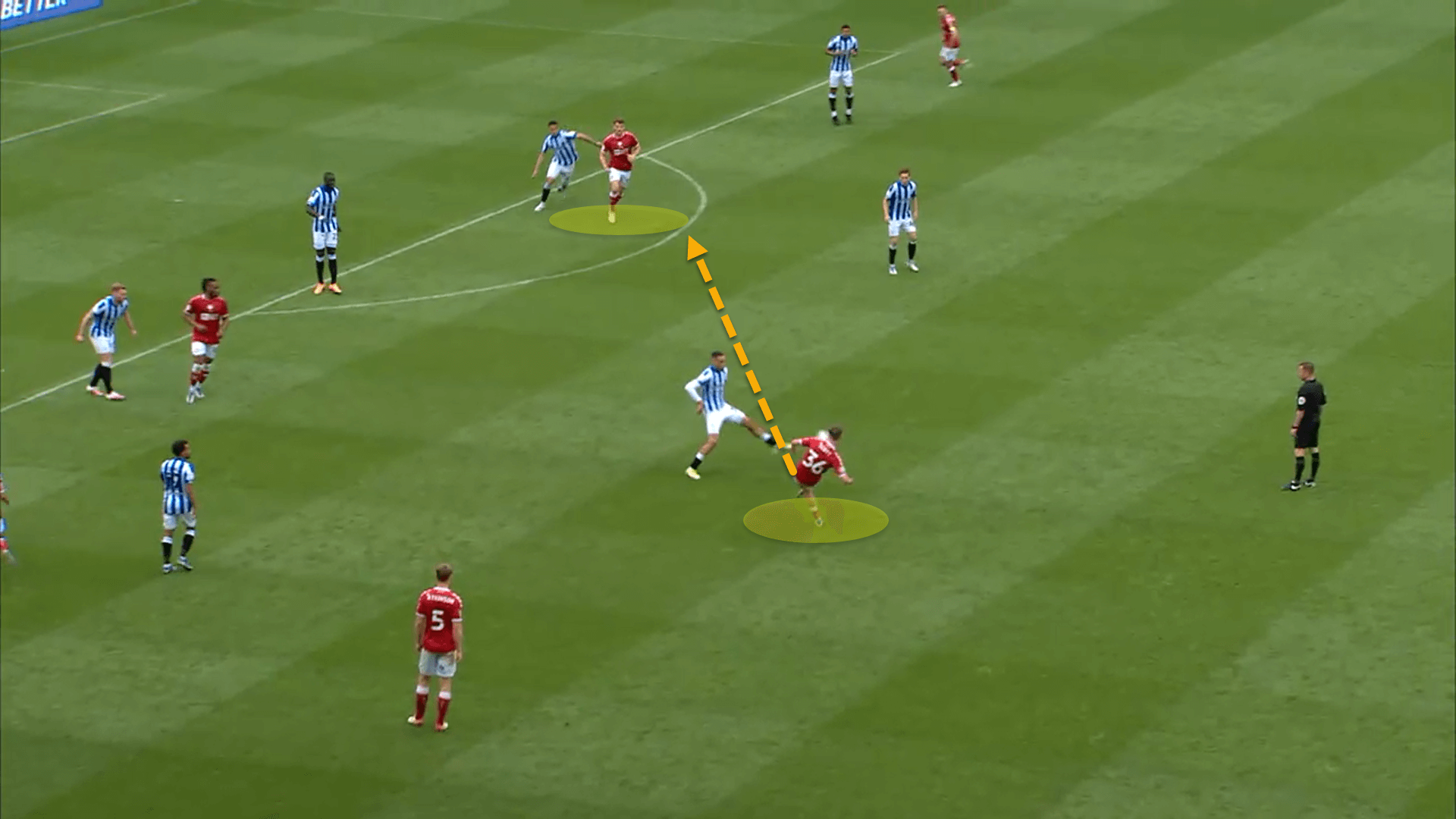
The teenager is currently averaging 7 forward passes per 90 this season, 3.15 passes to the final third, 0.35 shots assists per 90 and an expected assists ratio of 0.08 per 90. These stats are not wonderful and certainly need to be improved upon by the youngster although they are slightly skewed due to Bristol’s lack of ball possession and poor results thus far, sitting in the relegation zone as of writing.
The Guernsey Grealish
Hailing from Guernsey, while this certainly isn’t a new comparison by any stretch of the imagination, Alex Scott is regularly likened to Manchester City winger Jack Grealish when describing his style of play.
In fact, one could argue that at 18, Scott is a much better all-around footballer than Grealish was at that age, but development isn’t linear so it’s difficult to tell whether the teenager will reach the heights of a Grealish or not.
Nevertheless, in terms of their keenness to be explosive on the ball as well as always looking to dribble at opposition defenders to enter the penalty area, the pair are rather similar.
Scott’s touch is more explosive than anything. The Bristol youngster has a tendency to receive the ball by moving his backfoot towards it right before receiving. This allows him to push the ball past onrushing defenders.
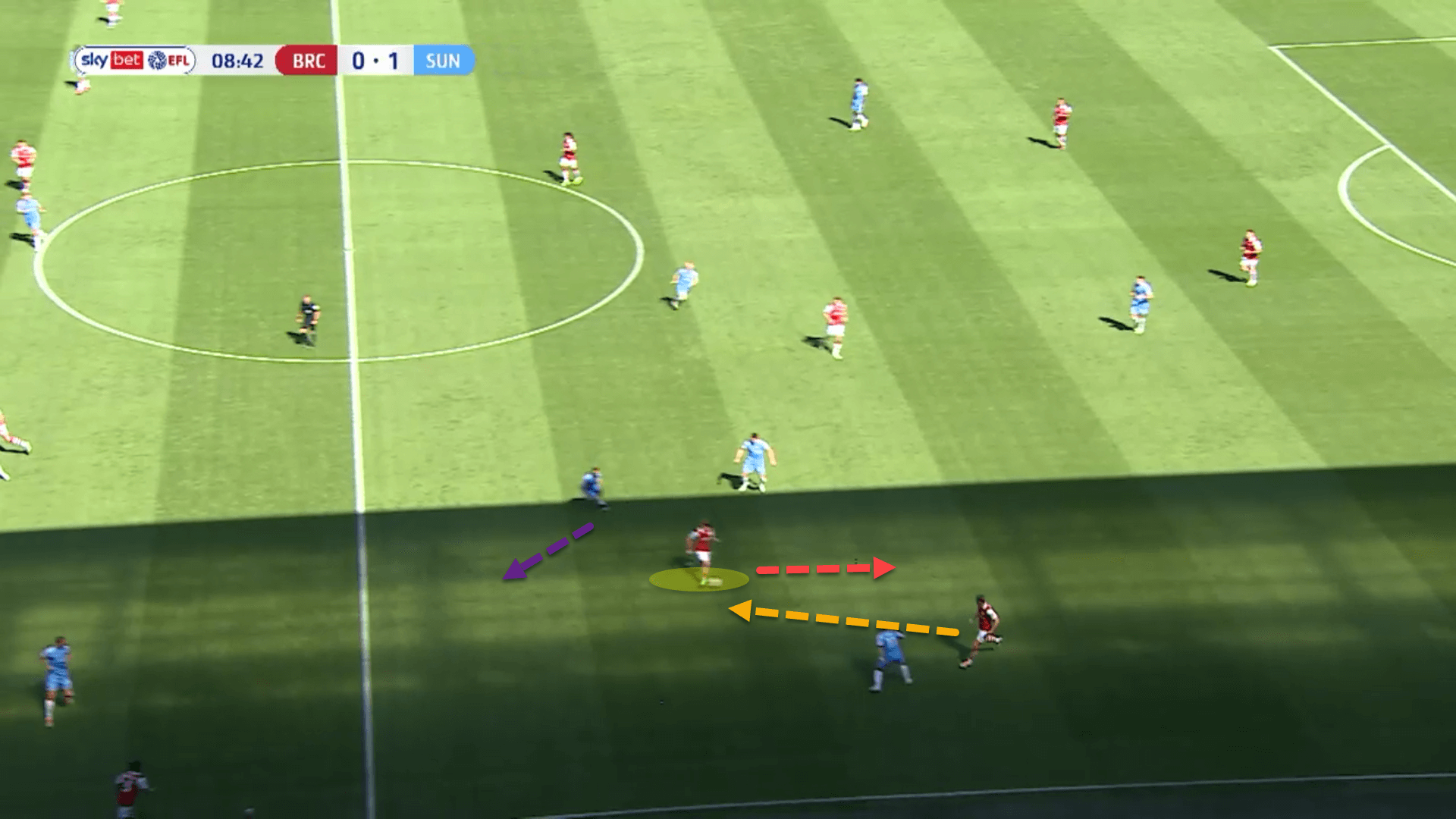
For instance, here, Scott receives the ball from Bristol’s left centre-back. The Sunderland midfielder who is jumping to close him down from behind expects the teenager to open his body up and turn out with his right foot and so moved this way to try and anticipate Scott’s movement.
However, Scott takes the ball with his weaker left foot, pushing it first time to the left explosively and getting away from the danger before laying it off to a teammate.
Like Grealish, Scott also constantly looks to run at players. This season so far, the Guernsey-born star has averaged 2.1 dribbles per 90 with a success rate of 100% — which is incredible regardless of whether just a few games of the season have been played or not.
Furthermore, the versatile academy product has averaged 1.05 progressive runs per 90, displaying his willingness to carry the ball forward by dribbling past players.
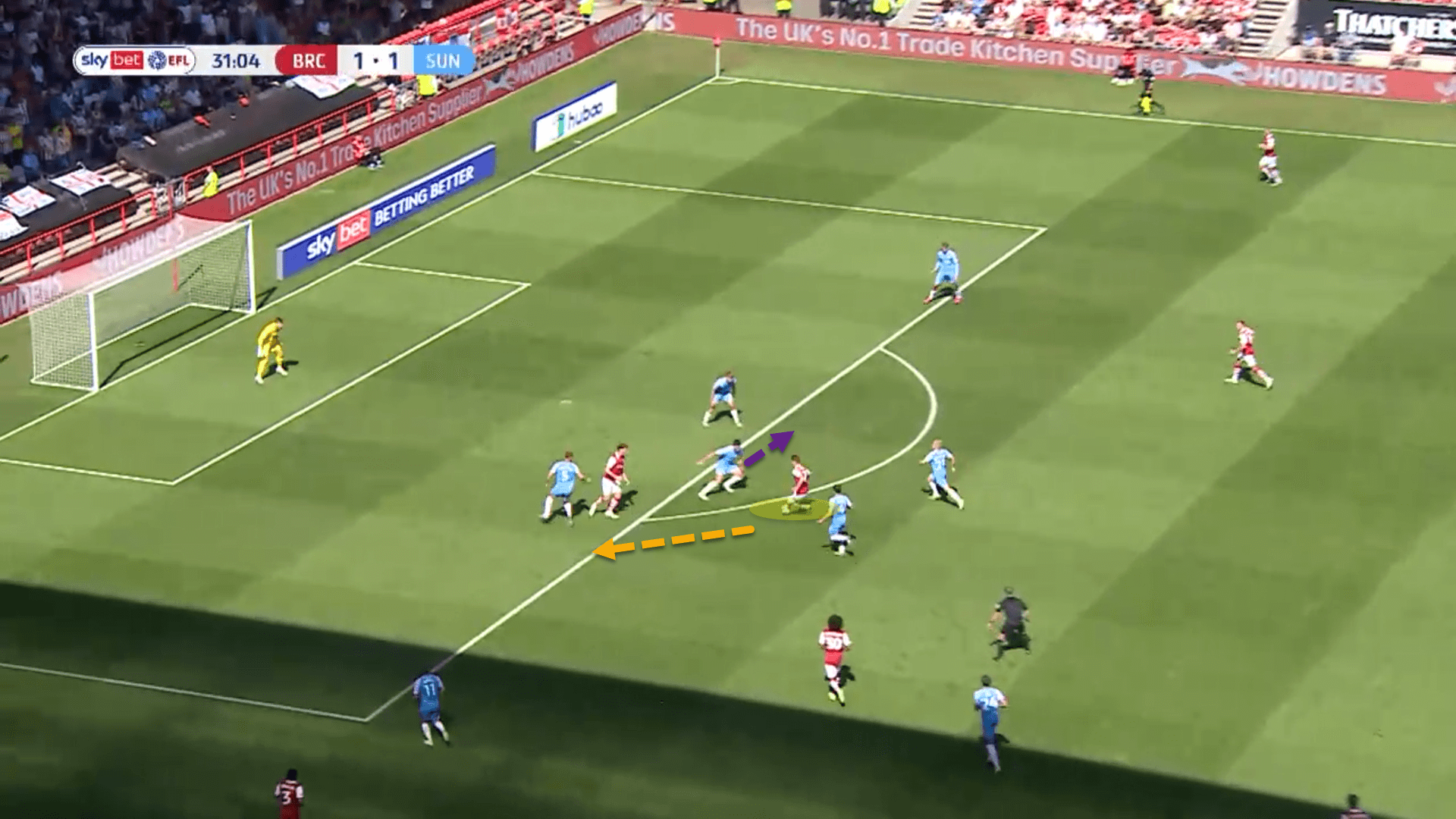
His low centre of gravity is really helpful in these situations as Scott can disguise which way he is going before bursting to one side, flat-footing defenders such as in the previous image.
The Sunderland player squared him up outside the area. Scott quickly feinted to go right, causing the defender to fall for his trick, before dropping his shoulder and bursting to the left.
A great technician on the ball — this does lead to the player getting kicked quite a lot. Scott is fouled 1.75 times per 90 which is something he will need to get used to in the professional game. Even Grealish receives the same treatment but on a much larger scale, consistently being one of the most fouled players in Europe.
Conclusion
Scott is still very rough around the edges, but even at 18, in such a difficult league like the EFL Championship, he sticks out like a sore thumb on the pitch for his quality.
When watching him play, you see a player without fear, but with real maturity to his game, hence why Pearson has made the teenager a first-team regular.
It’s very easy to understand why clubs like Spurs and Man United have extensively scouted the England U19 international who has a bright future ahead should he continue to follow the trajectory of his potential.

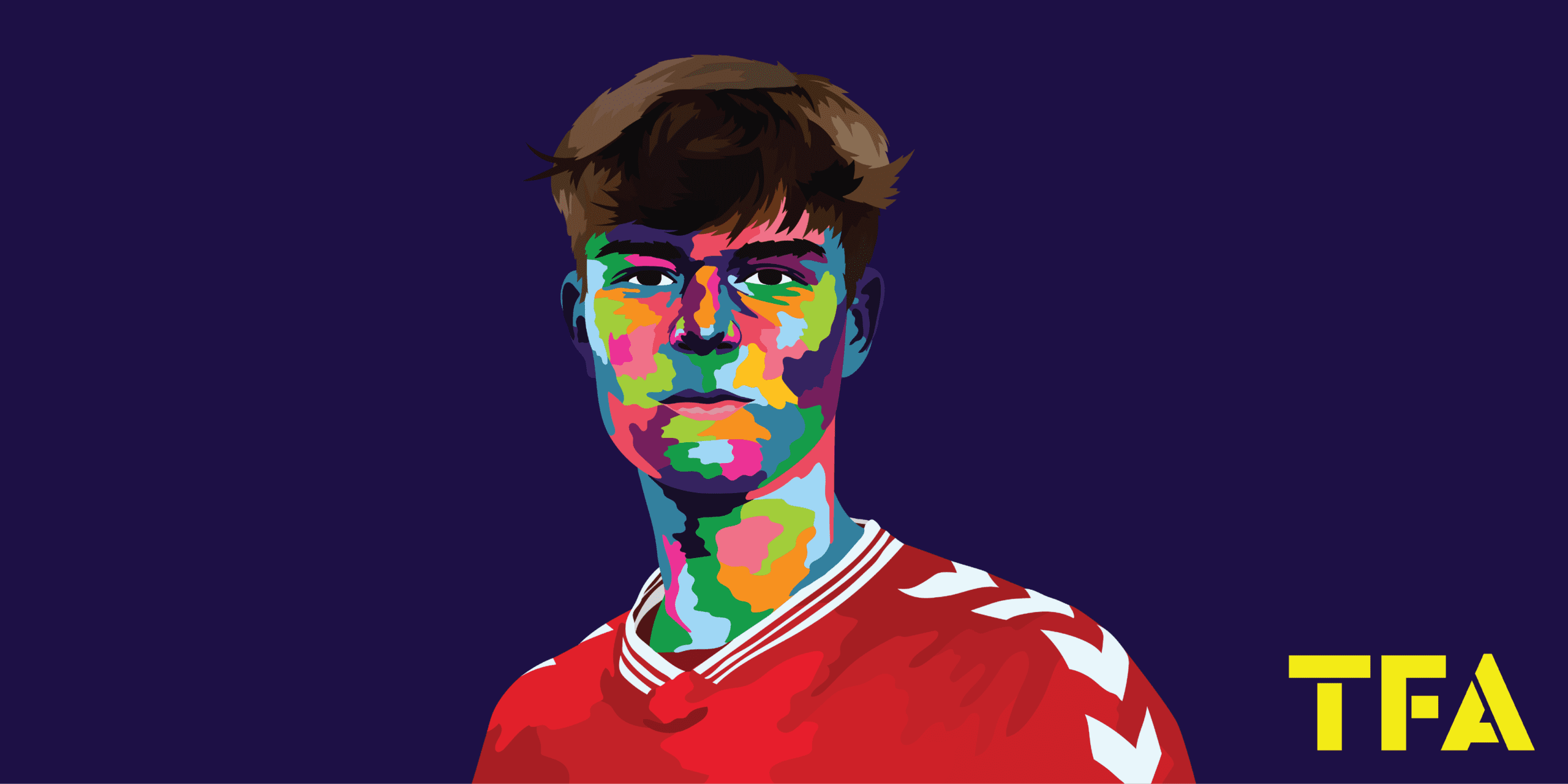


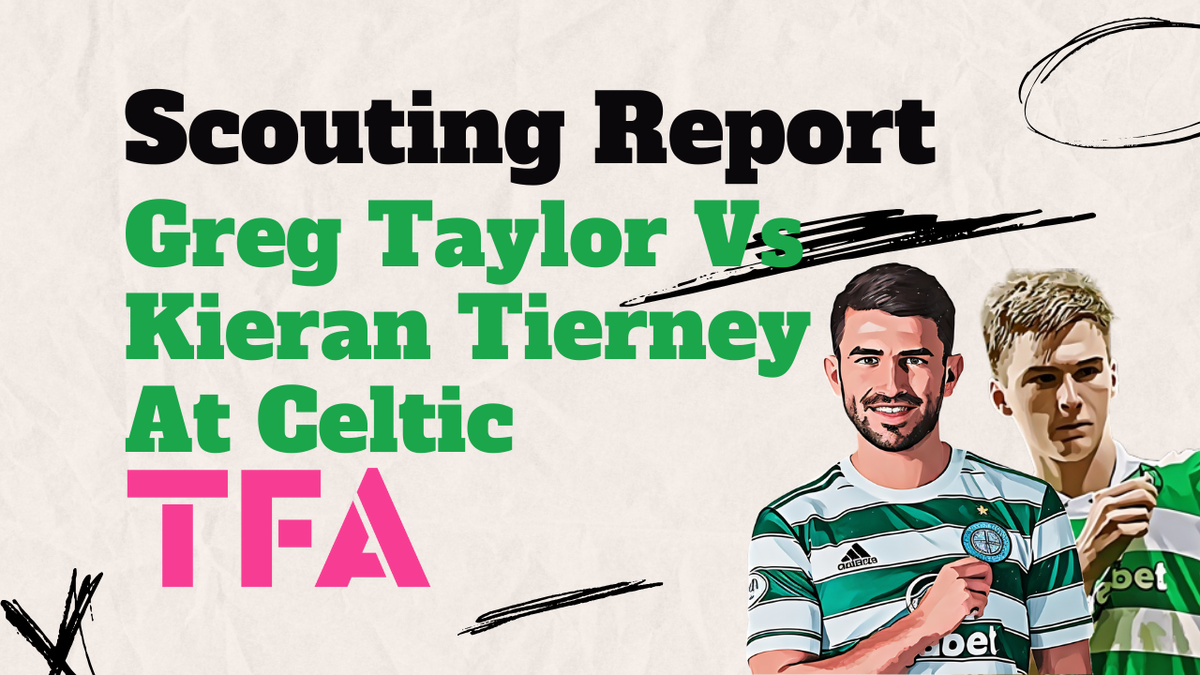
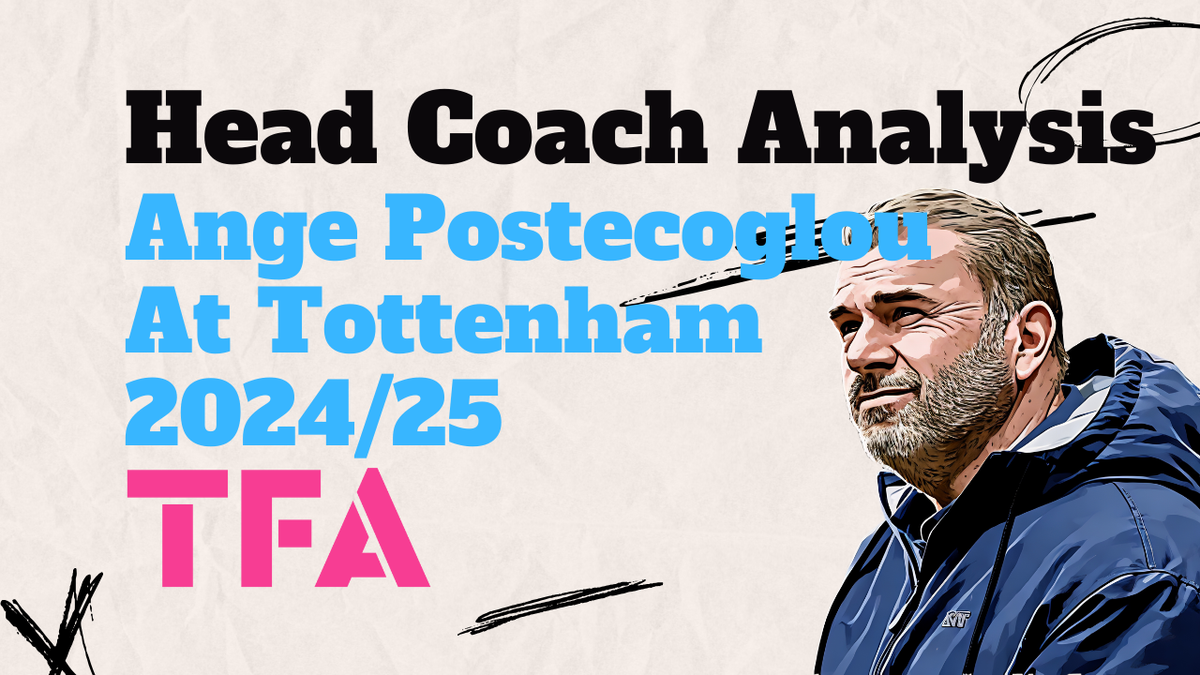
Comments